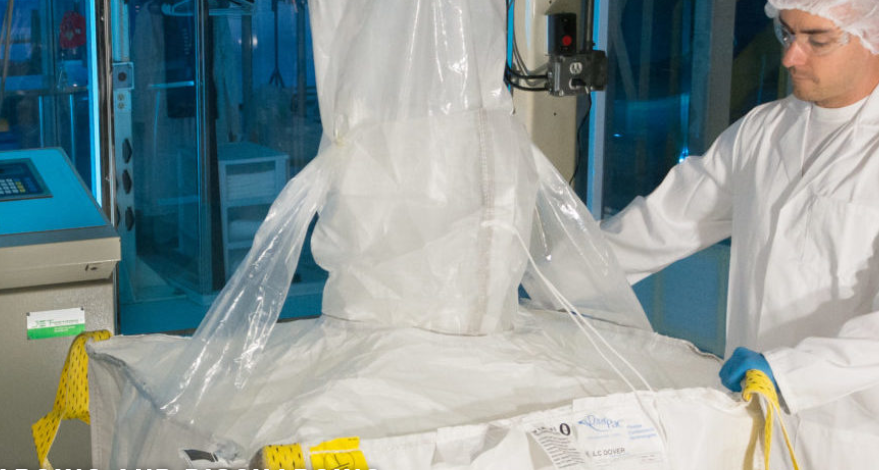
For years pharmaceutical manufacturers have invested in rigid stainless steel equipment for upstream processing. While this traditional approach made sense in the past, when larger tanks and bioreactors were the industry trend, does it still hold up today?
With new and innovative single-use containment products now on the market, manufacturers have access to flexible, safe and cost-effective solutions with the potential to give stainless steel a run for its money.
So, for upstream biopharmaceutical processes, what can single-use containment products offer that a traditional system can’t?
Environmental benefits
According to a 2014 study by GE Healthcare, single-use technologies have a lower environmental damage impact overall than traditional systems. Comparing the use of single-use technologies to stainless steel processes in pharmaceutical manufacturing, the life-cycle assessment found that the former helped to reduce the damage to human health, ecosystems and resources.
But according to Scott Patterson, vice president of pharma/biopharma at ILC Dover, just how environmentally-friendly the process is can vary widely from plant to plant.
“My belief is that single-use products provide a better environmentally friendly situation because facilities using these don’t have to conduct excessive cleaning,” says Patterson. “At stainless steel plants, operators are not only cleaning with water but they also have detergents and solvents to deal with.”
With cleaning water contaminated by either drug products or cleaning chemicals, operators are unable to put that liquid into the environment. Particularly in the US and Europe, plants are responsible for landfill waste, so manufacturers often chose the incineration process to dispose of this water.
According to Patterson: “The question is would you rather incinerate some small amount of plastic or a significant amount of contaminated water? Ultimately, nobody wants to burn hundreds of kilos of water due to energy costs and the waste factor.”
Increased safety, reduced contamination
There are a range of risks involved when dealing with hazardous drug products. But despite the risks involved, it’s not uncommon to see workers transferring these substances in open processes, causing powders to spread around the room and contaminating or damaging other materials or equipment and posing risks to employees.
While contamination is a major issue for biopharmaceutical plants, particularly those dealing with multiple products such as CMOs, there are a number of measures that can be taken to protect patients, personnel, and the product.
According to Patterson: “In upstream processing, it’s pretty straightforward. It’s taking powders or siloed materials that are weighed to a specific amount and then transferring and loading into a hydration tank. But it all revolves around the ability to reduce the overall risk of bacteria and contamination.
“Ultimately, the ability to handle the media powders and make dust type connections at the hydration tank is much better with single-use products than with stainless steel equipment.”
With products like ILC Dover’s EZ BioPac, dispensing times can be reduced, spillages stopped and contamination risks eradicated. Designed specifically to reduce contamination in the powder transfer process, it boasts an outer skirt which folds down around the frame and then back up again, providing a barrier between the outside of the bag and the product, so that powder is not transferred from the dispensing area to the process area.
Cutting down cleaning
Cleaning and validation can be incredibly time-consuming throughout drug manufacturing, but single-use containment solutions can reduce this ongoing need for deep cleans. After all, even after a lengthy validation process, there is still no such thing as perfectly clean.
But when the entire biopharma process utilises single-use products, the need for cleaning and validation is removed altogether, reducing the risk of bacteria release and contamination which can lead to the failure of cell culture growth or efficacy of drug products.
“It really always goes back to that single use eliminates the chance of bacteria contamination, whilst stainless steel products have to be cleaned and leave that risk always apparent,” says Patterson.
“Maintenance is performed not only on the products used in the process but on the entire system in the facility that generates cleaning water. With single-use, that entire process is no longer required, saving a great deal of time and resources.”
Cost-effectiveness
From the very conception of a new facility, it is possible for plants to make savings when using single-use solutions. In eradicating large stainless steel equipment, the company is able to reduce the size of the facility by cutting out the bulk of equipment for cleaning. This, in turn, saves a huge amount of capital expenditure.
There are also significant savings to be made by removing the costly cleaning and validation processes. In fact, tests conducted by ILC Dover found that the EZ BioPac solution could save biopharma manufacturers 71% of a labor time across the sampling, warehousing, dispensing and hydration processes.
The solution also gives operators the ability to contain at the source, stopping the product from escaping and reducing shrinkage and wasted product.
There are even direct savings to be found in the installation process, costing typically 15% to 20% of the cost of traditional hardwall equipment.
“We still see companies that are using stainless steel technology who believe the economics are not there to move to single-use products in the upstream area,” says Patterson. “But almost all of the economics argument for stainless steel has been proven over and over again to favour single-use solutions.
“When combined with the findings of GE Healthcare of the lower overall environmental impact of single-use technologies when compared to traditional systems, there is a very strong case for biopharma firms to make the switch to single-use.”
To find out more, visit www.ilcdover.com


